Staufen-1 (STAU1) is a protein RNA-binding becomes very overabundant in various models of neurodegenerative diseases, including those who carry mutations in presenilin1 (PSEN1), microtubule-associated protein tau (MAPT), huntingtin (HTT), TAR DNA-binding protein -43 gene (TARDBP), or C9orf72.
We previously reported that the increase in STAU1 determine defects and knockdown autophagy is protective in models of several neurodegenerative diseases. Additional functional consequences STAU1 overwhelming, however, has not been investigated. We studied the role of chronic activation STAU1 in the folded protein response (UPR), a common feature of neurodegenerative diseases and are often directly related to the death of neurons.
Here we report that STAU1 is a novel modulator of the UPR, and is required for apoptosis induced by activation of a perk-CHOP. STAU1 levels increase in response to some of the endoplasmic reticulum (ER) stress, and expression of exogenous STAU1 enough to cause apoptosis through pathways of UPR perk-CHOP. cortical neurons and skin fibroblasts derived from Stau1 – / – mice showed a decrease in the UPR and apoptosis when challenged with thapsigargin.
In fibroblasts from individuals with SCA2 or with ALS causes and C9ORF72 TDP-43 mutations, we found extremely elevated levels of STAU1 and CHOP in basal conditions, and STAU1 knockdown CHOP levels returned to normal. Taken together, these results suggest that STAU1 overabundance reduce cellular resistance to ER stress and apoptosis deposition.
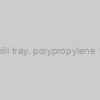 Spill tray, polypropylene 14" x 10" x 1" |
|
108DST10 |
Glascol |
each |
EUR 88 |
 Spill tray, polypropylene 14" x 20" x 1" |
|
108DST20 |
Glascol |
each |
EUR 106 |
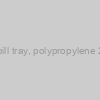 Spill tray, polypropylene 24" x 24" x 1" |
|
108DST24 |
Glascol |
each |
EUR 133 |
 SILICONE SPILLPROOF TOP - 2L FOR AL HSD STMTL |
|
100DSI02 |
Glascol |
each |
EUR 166 |
 SILICONE SPILLPROOF TOP - 5L FOR AL HSD STMTL |
|
100DSI05 |
Glascol |
each |
EUR 206 |
 SILICONE SPILLPROOF TOP - 12L FOR AL HSD STMTL |
|
100DSI12 |
Glascol |
each |
EUR 250 |
 SILICONE SPILLPROOF TOP - 22L FOR AL HSD STMTL |
|
100DSI22 |
Glascol |
each |
EUR 339 |
 Sensor, acrylic block for Spill Alarm & Cut Off |
|
108ASP-AB |
Glascol |
each |
EUR 188 |
 HiCombat Microbiology Spillage Kit |
|
LA734-1KT |
EWC Diagnostics |
1 unit |
EUR 65.38 |
|
Description: HiCombat Microbiology Spillage Kit |
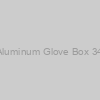 Aluminum Glove Box 34" x 20" w/ spill tray & hygrometer |
|
108CGB24-20 |
Glascol |
each |
EUR 1797 |
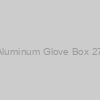 Aluminum Glove Box 27" x 20" w/ spill tray & hygrometer |
|
108CGB27-20 |
Glascol |
each |
EUR 2146 |
 Aluminum Glove Box 34" x 20" w/ spill tray & hygrometer |
|
108CGB34-20 |
Glascol |
each |
EUR 2211 |
 Spill Alarm & Cut-Off - with sensor block on 6' cable. One outlet, 1500W, 120V |
|
108ASP-1 |
Glascol |
each |
EUR 814 |
 - Rat Spi-B transcription factor (Spi-1/PU.1 related) (Spib), (10 ug)) Spib (untagged ORF) - Rat Spi-B transcription factor (Spi-1/PU.1 related) (Spib), (10 ug) |
|
RN202347 |
Origene Technologies GmbH |
10 µg |
Ask for price |
 - Rat Spi-C transcription factor (Spi-1/PU.1 related) (Spic), (10 ug)) Spic (untagged ORF) - Rat Spi-C transcription factor (Spi-1/PU.1 related) (Spic), (10 ug) |
|
RN204207 |
Origene Technologies GmbH |
10 µg |
Ask for price |
-Human Spi-C transcription factor (Spi-1/PU.1 related) (SPIC)) SPIC (untagged)-Human Spi-C transcription factor (Spi-1/PU.1 related) (SPIC) |
|
SC123240 |
Origene Technologies GmbH |
10 µg |
Ask for price |
-Human Spi-B transcription factor (Spi-1/PU.1 related) (SPIB)) SPIB (untagged)-Human Spi-B transcription factor (Spi-1/PU.1 related) (SPIB) |
|
SC118169 |
Origene Technologies GmbH |
10 µg |
Ask for price |
-Human Spi-B transcription factor (Spi-1/PU.1 related) (SPIB)) SPIB (untagged)-Human Spi-B transcription factor (Spi-1/PU.1 related) (SPIB) |
|
SC317377 |
Origene Technologies GmbH |
10 µg |
Ask for price |
-Human Spi-B transcription factor (Spi-1/PU.1 related) (SPIB)) SPIB (untagged)-Human Spi-B transcription factor (Spi-1/PU.1 related) (SPIB) |
|
SC320776 |
Origene Technologies GmbH |
10 µg |
Ask for price |
 - Mouse Spi-C transcription factor (Spi-1/PU.1 related) (Spic)) Spic (GFP-tagged) - Mouse Spi-C transcription factor (Spi-1/PU.1 related) (Spic) |
|
MG203000 |
Origene Technologies GmbH |
10 µg |
Ask for price |
 - Human Spi-C transcription factor (Spi-1/PU.1 related) (SPIC)) SPIC (GFP-tagged) - Human Spi-C transcription factor (Spi-1/PU.1 related) (SPIC) |
|
RG207166 |
Origene Technologies GmbH |
10 µg |
Ask for price |
 - Human Spi-B transcription factor (Spi-1/PU.1 related) (SPIB)) SPIB (GFP-tagged) - Human Spi-B transcription factor (Spi-1/PU.1 related) (SPIB) |
|
RG203170 |
Origene Technologies GmbH |
10 µg |
Ask for price |
 - Mouse Spi-C transcription factor (Spi-1/PU.1 related) (Spic), (10ug)) Spic (untagged) - Mouse Spi-C transcription factor (Spi-1/PU.1 related) (Spic), (10ug) |
|
MC209446 |
Origene Technologies GmbH |
10 µg |
Ask for price |
 - Mouse Spi-B transcription factor (Spi-1/PU.1 related) (Spib), (10ug)) Spib (untagged) - Mouse Spi-B transcription factor (Spi-1/PU.1 related) (Spib), (10ug) |
|
MC214320 |
Origene Technologies GmbH |
10 µg |
Ask for price |
 - Mouse Spi-C transcription factor (Spi-1/PU.1 related) (Spic)) Spic (Myc-DDK-tagged) - Mouse Spi-C transcription factor (Spi-1/PU.1 related) (Spic) |
|
MR203000 |
Origene Technologies GmbH |
10 µg |
Ask for price |
 - Rat Spi-C transcription factor (Spi-1/PU.1 related) (Spic), (10 ug)) Spic (Myc-DDK-tagged ORF) - Rat Spi-C transcription factor (Spi-1/PU.1 related) (Spic), (10 ug) |
|
RR204207 |
Origene Technologies GmbH |
10 µg |
Ask for price |
 - Rat Spi-B transcription factor (Spi-1/PU.1 related) (Spib), (10 ug)) Spib (Myc-DDK-tagged ORF) - Rat Spi-B transcription factor (Spi-1/PU.1 related) (Spib), (10 ug) |
|
RR202347 |
Origene Technologies GmbH |
10 µg |
Ask for price |
 - Mouse Spi-B transcription factor (Spi-1/PU.1 related) (Spib)) Spib (Myc-DDK-tagged) - Mouse Spi-B transcription factor (Spi-1/PU.1 related) (Spib) |
|
MR225440 |
Origene Technologies GmbH |
10 µg |
Ask for price |
-Human Spi-C transcription factor (Spi-1/PU.1 related) (SPIC)) SPIC (Myc-DDK-tagged)-Human Spi-C transcription factor (Spi-1/PU.1 related) (SPIC) |
|
RC207166 |
Origene Technologies GmbH |
10 µg |
Ask for price |
-Human Spi-B transcription factor (Spi-1/PU.1 related) (SPIB)) SPIB (Myc-DDK-tagged)-Human Spi-B transcription factor (Spi-1/PU.1 related) (SPIB) |
|
RC203170 |
Origene Technologies GmbH |
10 µg |
Ask for price |
 - Mouse Spi-B transcription factor (Spi-1/PU.1 related) (Spib), (10ug)) Spib (GFP-tagged) - Mouse Spi-B transcription factor (Spi-1/PU.1 related) (Spib), (10ug) |
|
MG225440 |
Origene Technologies GmbH |
10 µg |
Ask for price |
 PU.1/Spi1 |
|
E8ET7107-49 |
EnoGene |
100ul |
EUR 275 |
|
Description: Available in various conjugation types. |
 SPI1 |
|
pro-2174 |
ProSpec Tany |
2µg |
EUR 60 |
|
Description: Recombinant Human Spi-1 Proto-Oncogene |
 - Rat Spi-C transcription factor (Spi-1/PU.1 related) (Spic), (10 ug)) Lenti ORF clone of Spic (mGFP-tagged ORF) - Rat Spi-C transcription factor (Spi-1/PU.1 related) (Spic), (10 ug) |
|
RR204207L4 |
Origene Technologies GmbH |
10 µg |
Ask for price |
 - Rat Spi-B transcription factor (Spi-1/PU.1 related) (Spib), (10 ug)) Lenti ORF clone of Spib (mGFP-tagged ORF) - Rat Spi-B transcription factor (Spi-1/PU.1 related) (Spib), (10 ug) |
|
RR202347L4 |
Origene Technologies GmbH |
10 µg |
Ask for price |
 - Mouse Spi-C transcription factor (Spi-1/PU.1 related) (Spic)) Lenti ORF clone of Spic (mGFP-tagged) - Mouse Spi-C transcription factor (Spi-1/PU.1 related) (Spic) |
|
MR203000L2 |
Origene Technologies GmbH |
10 µg |
Ask for price |
 - Mouse Spi-C transcription factor (Spi-1/PU.1 related) (Spic)) Lenti ORF clone of Spic (mGFP-tagged) - Mouse Spi-C transcription factor (Spi-1/PU.1 related) (Spic) |
|
MR203000L4 |
Origene Technologies GmbH |
10 µg |
Ask for price |
 - Rat Spi-C transcription factor (Spi-1/PU.1 related) (Spic), (10 ug)) Lenti ORF clone of Spic (Myc-DDK-tagged ORF) - Rat Spi-C transcription factor (Spi-1/PU.1 related) (Spic), (10 ug) |
|
RR204207L3 |
Origene Technologies GmbH |
10 µg |
Ask for price |
 - Rat Spi-B transcription factor (Spi-1/PU.1 related) (Spib), (10 ug)) Lenti ORF clone of Spib (Myc-DDK-tagged ORF) - Rat Spi-B transcription factor (Spi-1/PU.1 related) (Spib), (10 ug) |
|
RR202347L3 |
Origene Technologies GmbH |
10 µg |
Ask for price |
 - Mouse Spi-B transcription factor (Spi-1/PU.1 related) (Spib)) Lenti ORF clone of Spib (mGFP-tagged) - Mouse Spi-B transcription factor (Spi-1/PU.1 related) (Spib) |
|
MR225440L4 |
Origene Technologies GmbH |
10 µg |
Ask for price |
 SPI1 Spi-1 Proto-Oncogene Human Recombinant Protein |
|
PROTP17947 |
BosterBio |
Regular: 10ug |
EUR 380.4 |
|
Description: SPI1 Human Recombinant produced in E. coli is a single polypeptide chain containing 294 amino acids (1-271) and having a molecular mass of 33.6kDa.;SPI1 is fused to a 23 amino acid His-tag at N-terminus & purified by proprietary chromatographic techniques. |
 - Mouse Spi-C transcription factor (Spi-1/PU.1 related) (Spic)) Lenti ORF clone of Spic (Myc-DDK-tagged) - Mouse Spi-C transcription factor (Spi-1/PU.1 related) (Spic) |
|
MR203000L1 |
Origene Technologies GmbH |
10 µg |
Ask for price |
 - Mouse Spi-C transcription factor (Spi-1/PU.1 related) (Spic)) Lenti ORF clone of Spic (Myc-DDK-tagged) - Mouse Spi-C transcription factor (Spi-1/PU.1 related) (Spic) |
|
MR203000L3 |
Origene Technologies GmbH |
10 µg |
Ask for price |
 - Mouse Spi-B transcription factor (Spi-1/PU.1 related) (Spib)) Lenti ORF clone of Spib (Myc-DDK-tagged) - Mouse Spi-B transcription factor (Spi-1/PU.1 related) (Spib) |
|
MR225440L3 |
Origene Technologies GmbH |
10 µg |
Ask for price |
) Spiroplasma citri Spiralin (spi) |
|
1-CSB-EP322510FKO |
Cusabio |
-
Ask for price
-
Ask for price
-
Ask for price
-
Ask for price
-
Ask for price
-
Ask for price
|
- 100ug
- 10ug
- 1MG
- 200ug
- 500ug
- 50ug
|
|
|
|
Description: Recombinant Spiroplasma citri Spiralin(spi) expressed in E.coli |
 - Human spleen focus forming virus (SFFV) proviral integration oncogene spi1 (SPI1), transcript variant 2) SPI1 (GFP-tagged) - Human spleen focus forming virus (SFFV) proviral integration oncogene spi1 (SPI1), transcript variant 2 |
|
RG212818 |
Origene Technologies GmbH |
10 µg |
Ask for price |
 - Human spleen focus forming virus (SFFV) proviral integration oncogene spi1 (SPI1), transcript variant 1) SPI1 (GFP-tagged) - Human spleen focus forming virus (SFFV) proviral integration oncogene spi1 (SPI1), transcript variant 1 |
|
RG217488 |
Origene Technologies GmbH |
10 µg |
Ask for price |
-Human spleen focus forming virus (SFFV) proviral integration oncogene spi1 (SPI1), transcript variant 2) SPI1 (untagged)-Human spleen focus forming virus (SFFV) proviral integration oncogene spi1 (SPI1), transcript variant 2 |
|
SC127924 |
Origene Technologies GmbH |
10 µg |
Ask for price |
-Human spleen focus forming virus (SFFV) proviral integration oncogene spi1 (SPI1), transcript variant 2) SPI1 (untagged)-Human spleen focus forming virus (SFFV) proviral integration oncogene spi1 (SPI1), transcript variant 2 |
|
SC317391 |
Origene Technologies GmbH |
10 µg |
Ask for price |
-Human spleen focus forming virus (SFFV) proviral integration oncogene spi1 (SPI1), transcript variant 1) SPI1 (untagged)-Human spleen focus forming virus (SFFV) proviral integration oncogene spi1 (SPI1), transcript variant 1 |
|
SC315715 |
Origene Technologies GmbH |
10 µg |
Ask for price |
 SPI1 siRNA |
|
20-abx934949 |
Abbexa |
-
Ask for price
-
Ask for price
|
|
|
|
 SPI1 siRNA |
|
20-abx934950 |
Abbexa |
-
Ask for price
-
Ask for price
|
|
|
|
 SPI1 siRNA |
|
20-abx905245 |
Abbexa |
-
Ask for price
-
Ask for price
|
|
|
|
 - Mouse Spi-C transcription factor (Spi-1/PU.1 related) (Spic), 200ul, >10^7 TU/mL) Lenti ORF particles, Spic (GFP-tagged) - Mouse Spi-C transcription factor (Spi-1/PU.1 related) (Spic), 200ul, >10^7 TU/mL |
|
MR203000L2V |
Origene Technologies GmbH |
200 µl |
Ask for price |
 - Mouse Spi-C transcription factor (Spi-1/PU.1 related) (Spic), 200ul, >10^7 TU/mL) Lenti ORF particles, Spic (GFP-tagged) - Mouse Spi-C transcription factor (Spi-1/PU.1 related) (Spic), 200ul, >10^7 TU/mL |
|
MR203000L4V |
Origene Technologies GmbH |
200 µl |
Ask for price |
 - Rat Spi-C transcription factor (Spi-1/PU.1 related) (Spic), 200ul, >10^7 TU/mL) Lenti ORF particles, Spic (GFP-tagged ORF) - Rat Spi-C transcription factor (Spi-1/PU.1 related) (Spic), 200ul, >10^7 TU/mL |
|
RR204207L4V |
Origene Technologies GmbH |
200 µl |
Ask for price |
 - Rat Spi-B transcription factor (Spi-1/PU.1 related) (Spib), 200ul, >10^7 TU/mL) Lenti ORF particles, Spib (GFP-tagged ORF) - Rat Spi-B transcription factor (Spi-1/PU.1 related) (Spib), 200ul, >10^7 TU/mL |
|
RR202347L4V |
Origene Technologies GmbH |
200 µl |
Ask for price |
 - Mouse Spi-B transcription factor (Spi-1/PU.1 related) (Spib), 200ul, >10^7 TU/mL) Lenti ORF particles, Spib (GFP-tagged) - Mouse Spi-B transcription factor (Spi-1/PU.1 related) (Spib), 200ul, >10^7 TU/mL |
|
MR225440L4V |
Origene Technologies GmbH |
200 µl |
Ask for price |
 Recombinant) Coronavirus 2019 Spike (1000-1200 a.a.) Recombinant |
|
rAP-5516 |
Angio Proteomie |
Inquiry |
Ask for price |
 Recombinant) Coronavirus 2019 Spike (800-1000 a.a.) Recombinant |
|
rAP-5517 |
Angio Proteomie |
Inquiry |
Ask for price |
 - Rat Spi-C transcription factor (Spi-1/PU.1 related) (Spic), 200ul, >10^7 TU/mL) Lenti ORF particles, Spic (Myc-DDK-tagged ORF) - Rat Spi-C transcription factor (Spi-1/PU.1 related) (Spic), 200ul, >10^7 TU/mL |
|
RR204207L3V |
Origene Technologies GmbH |
200 µl |
Ask for price |
 - Rat Spi-B transcription factor (Spi-1/PU.1 related) (Spib), 200ul, >10^7 TU/mL) Lenti ORF particles, Spib (Myc-DDK-tagged ORF) - Rat Spi-B transcription factor (Spi-1/PU.1 related) (Spib), 200ul, >10^7 TU/mL |
|
RR202347L3V |
Origene Technologies GmbH |
200 µl |
Ask for price |
 - Human Spi-C transcription factor (Spi-1/PU.1 related) (SPIC), 200ul, >10^7 TU/mL) Lenti ORF particles, SPIC (Myc-DDK tagged) - Human Spi-C transcription factor (Spi-1/PU.1 related) (SPIC), 200ul, >10^7 TU/mL |
|
RC207166L1V |
Origene Technologies GmbH |
200 µl |
Ask for price |
 - Human Spi-C transcription factor (Spi-1/PU.1 related) (SPIC), 200ul, >10^7 TU/mL) Lenti ORF particles, SPIC (mGFP-tagged) - Human Spi-C transcription factor (Spi-1/PU.1 related) (SPIC), 200ul, >10^7 TU/mL |
|
RC207166L2V |
Origene Technologies GmbH |
200 µl |
Ask for price |
 - Human Spi-C transcription factor (Spi-1/PU.1 related) (SPIC), 200ul, >10^7 TU/mL) Lenti ORF particles, SPIC (Myc-DDK tagged) - Human Spi-C transcription factor (Spi-1/PU.1 related) (SPIC), 200ul, >10^7 TU/mL |
|
RC207166L3V |
Origene Technologies GmbH |
200 µl |
Ask for price |
 - Human Spi-C transcription factor (Spi-1/PU.1 related) (SPIC), 200ul, >10^7 TU/mL) Lenti ORF particles, SPIC (mGFP-tagged) - Human Spi-C transcription factor (Spi-1/PU.1 related) (SPIC), 200ul, >10^7 TU/mL |
|
RC207166L4V |
Origene Technologies GmbH |
200 µl |
Ask for price |
 - Human Spi-B transcription factor (Spi-1/PU.1 related) (SPIB), 200ul, >10^7 TU/mL) Lenti ORF particles, SPIB (Myc-DDK tagged) - Human Spi-B transcription factor (Spi-1/PU.1 related) (SPIB), 200ul, >10^7 TU/mL |
|
RC203170L1V |
Origene Technologies GmbH |
200 µl |
Ask for price |
 - Human Spi-B transcription factor (Spi-1/PU.1 related) (SPIB), 200ul, >10^7 TU/mL) Lenti ORF particles, SPIB (mGFP-tagged) - Human Spi-B transcription factor (Spi-1/PU.1 related) (SPIB), 200ul, >10^7 TU/mL |
|
RC203170L2V |
Origene Technologies GmbH |
200 µl |
Ask for price |
 - Human Spi-B transcription factor (Spi-1/PU.1 related) (SPIB), 200ul, >10^7 TU/mL) Lenti ORF particles, SPIB (Myc-DDK tagged) - Human Spi-B transcription factor (Spi-1/PU.1 related) (SPIB), 200ul, >10^7 TU/mL |
|
RC203170L3V |
Origene Technologies GmbH |
200 µl |
Ask for price |
 - Human Spi-B transcription factor (Spi-1/PU.1 related) (SPIB), 200ul, >10^7 TU/mL) Lenti ORF particles, SPIB (mGFP-tagged) - Human Spi-B transcription factor (Spi-1/PU.1 related) (SPIB), 200ul, >10^7 TU/mL |
|
RC203170L4V |
Origene Technologies GmbH |
200 µl |
Ask for price |
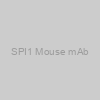 SPI1 Mouse mAb |
|
E2220729 |
EnoGene |
100ul |
EUR 225 |
|
Description: Available in various conjugation types. |
 SPI1 Mouse mAb |
|
E2620355 |
EnoGene |
100ul |
EUR 225 |
|
Description: Available in various conjugation types. |
 anti-PU.1/Spi1 |
|
YF-PA14755 |
Abfrontier |
100 ug |
EUR 483.6 |
|
Description: Rabbit polyclonal to PU.1/Spi1 |
-Human spleen focus forming virus (SFFV) proviral integration oncogene spi1 (SPI1), transcript variant 2) SPI1 (Myc-DDK-tagged)-Human spleen focus forming virus (SFFV) proviral integration oncogene spi1 (SPI1), transcript variant 2 |
|
RC212818 |
Origene Technologies GmbH |
10 µg |
Ask for price |
-Human spleen focus forming virus (SFFV) proviral integration oncogene spi1 (SPI1), transcript variant 1) SPI1 (Myc-DDK-tagged)-Human spleen focus forming virus (SFFV) proviral integration oncogene spi1 (SPI1), transcript variant 1 |
|
RC217488 |
Origene Technologies GmbH |
10 µg |
Ask for price |
 - Mouse Spi-C transcription factor (Spi-1/PU.1 related) (Spic), 200ul, >10^7 TU/mL) Lenti ORF particles, Spic (Myc-DDK-tagged) - Mouse Spi-C transcription factor (Spi-1/PU.1 related) (Spic), 200ul, >10^7 TU/mL |
|
MR203000L1V |
Origene Technologies GmbH |
200 µl |
Ask for price |
 - Mouse Spi-C transcription factor (Spi-1/PU.1 related) (Spic), 200ul, >10^7 TU/mL) Lenti ORF particles, Spic (Myc-DDK-tagged) - Mouse Spi-C transcription factor (Spi-1/PU.1 related) (Spic), 200ul, >10^7 TU/mL |
|
MR203000L3V |
Origene Technologies GmbH |
200 µl |
Ask for price |
 - Homo sapiens Spi-B transcription factor (Spi-1/PU.1 related) (SPIB), transcript variant 3) SPIB (GFP-tagged) - Homo sapiens Spi-B transcription factor (Spi-1/PU.1 related) (SPIB), transcript variant 3 |
|
RG231980 |
Origene Technologies GmbH |
10 µg |
Ask for price |
 - Homo sapiens Spi-B transcription factor (Spi-1/PU.1 related) (SPIB), transcript variant 2) SPIB (GFP-tagged) - Homo sapiens Spi-B transcription factor (Spi-1/PU.1 related) (SPIB), transcript variant 2 |
|
RG233352 |
Origene Technologies GmbH |
10 µg |
Ask for price |
 - Homo sapiens Spi-B transcription factor (Spi-1/PU.1 related) (SPIB), transcript variant 4) SPIB (GFP-tagged) - Homo sapiens Spi-B transcription factor (Spi-1/PU.1 related) (SPIB), transcript variant 4 |
|
RG233498 |
Origene Technologies GmbH |
10 µg |
Ask for price |
 - Homo sapiens Spi-B transcription factor (Spi-1/PU.1 related) (SPIB), transcript variant 3) SPIB (untagged) - Homo sapiens Spi-B transcription factor (Spi-1/PU.1 related) (SPIB), transcript variant 3 |
|
SC330206 |
Origene Technologies GmbH |
10 µg |
Ask for price |
 - Homo sapiens Spi-B transcription factor (Spi-1/PU.1 related) (SPIB), transcript variant 2) SPIB (untagged) - Homo sapiens Spi-B transcription factor (Spi-1/PU.1 related) (SPIB), transcript variant 2 |
|
SC332059 |
Origene Technologies GmbH |
10 µg |
Ask for price |
 - Homo sapiens Spi-B transcription factor (Spi-1/PU.1 related) (SPIB), transcript variant 4) SPIB (untagged) - Homo sapiens Spi-B transcription factor (Spi-1/PU.1 related) (SPIB), transcript variant 4 |
|
SC332060 |
Origene Technologies GmbH |
10 µg |
Ask for price |
 - Mouse Spi-B transcription factor (Spi-1/PU.1 related) (Spib), 200ul, >10^7 TU/mL) Lenti ORF particles, Spib (Myc-DDK-tagged) - Mouse Spi-B transcription factor (Spi-1/PU.1 related) (Spib), 200ul, >10^7 TU/mL |
|
MR225440L3V |
Origene Technologies GmbH |
200 µl |
Ask for price |
 SPI1 Rabbit mAb |
|
59789 |
SAB |
100ul |
EUR 339 |
 SPI1 Rabbit mAb |
|
E2R25501 |
EnoGene |
100ul |
EUR 255 |
|
Description: Available in various conjugation types. |
 SPI1 Rabbit mAb |
|
E2R27214 |
EnoGene |
100ul |
EUR 255 |
|
Description: Available in various conjugation types. |
 SPI1 Rabbit pAb |
|
E2382361 |
EnoGene |
100ul |
EUR 225 |
|
Description: Available in various conjugation types. |
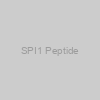 SPI1 Peptide |
|
42-746P |
ProSci |
0.1 mg |
EUR 405.6 |
|
Description: (IN) PU.1 peptide |
 SPI1 Rabbit mAb |
|
52847 |
SAB |
100ul |
EUR 499 |
 SPI1 Rabbit mAb |
|
52535 |
SAB |
100ul |
EUR 499 |
) Anti-PU.1/Spi1 (2G1) |
|
YF-MA10872 |
Abfrontier |
100 ug |
EUR 435.6 |
|
Description: Mouse monoclonal to PU.1/Spi1 |
) Anti-PU.1/Spi1 (1A3) |
|
YF-MA15569 |
Abfrontier |
100 ug |
EUR 435.6 |
|
Description: Mouse monoclonal to PU.1/Spi1 |
 SPI1 Rabbit mAb |
|
E2R382361 |
EnoGene |
100ul |
EUR 275 |
|
Description: Biotin-Conjugated, FITC-Conjugated , AF350 Conjugated , AF405M-Conjugated ,AF488-Conjugated, AF514-Conjugated ,AF532-Conjugated, AF555-Conjugated ,AF568-Conjugated , HRP-Conjugated, AF405S-Conjugated, AF405L-Conjugated , AF546-Conjugated, AF594-Conjugated , AF610-Conjugated, AF635-Conjugated , AF647-Conjugated , AF680-Conjugated , AF700-Conjugated , AF750-Conjugated , AF790-Conjugated , APC-Conjugated , PE-Conjugated , Cy3-Conjugated , Cy5-Conjugated , Cy5.5-Conjugated , Cy7-Conjugated Antibody |
 - Homo sapiens Spi-B transcription factor (Spi-1/PU.1 related) (SPIB), transcript variant 3) SPIB (Myc-DDK tagged) - Homo sapiens Spi-B transcription factor (Spi-1/PU.1 related) (SPIB), transcript variant 3 |
|
RC231980 |
Origene Technologies GmbH |
10 µg |
Ask for price |
 - Homo sapiens Spi-B transcription factor (Spi-1/PU.1 related) (SPIB), transcript variant 2) SPIB (Myc-DDK tagged) - Homo sapiens Spi-B transcription factor (Spi-1/PU.1 related) (SPIB), transcript variant 2 |
|
RC233352 |
Origene Technologies GmbH |
10 µg |
Ask for price |
 - Homo sapiens Spi-B transcription factor (Spi-1/PU.1 related) (SPIB), transcript variant 4) SPIB (Myc-DDK tagged) - Homo sapiens Spi-B transcription factor (Spi-1/PU.1 related) (SPIB), transcript variant 4 |
|
RC233498 |
Origene Technologies GmbH |
10 µg |
Ask for price |
 SPI1 Antibody |
|
33699 |
SAB |
100ul |
EUR 319 |
 SPI1 Antibody |
|
33699-100ul |
SAB |
100ul |
EUR 302.4 |
 SPI1 Antibody |
|
33699-50ul |
SAB |
50ul |
EUR 224.4 |
 SPI1 Antibody |
|
CSB-PA580989- |
Cusabio |
each |
EUR 402 |
|
|
|
Description: A polyclonal antibody against SPI1. Recognizes SPI1 from Human, Mouse, Rat. This antibody is Unconjugated. Tested in the following application: ELISA, WB;WB:1:500-1:3000 |
 SPI1 Antibody |
|
CSB-PA580989-100ul |
Cusabio |
100ul |
EUR 379.2 |
|
|
|
Description: A polyclonal antibody against SPI1. Recognizes SPI1 from Human, Mouse, Rat. This antibody is Unconjugated. Tested in the following application: ELISA, WB;WB:1:500-1:3000 |
 SPI1 Antibody |
|
E033699 |
EnoGene |
100μg/100μl |
EUR 255 |
|
Description: Available in various conjugation types. |
 SPI1 Antibody |
|
E11-10414C |
EnoGene |
100μg |
EUR 225 |
|
Description: Available in various conjugation types. |
 SPI2B rabbit pAb |
|
E28PT7211 |
EnoGene |
100μl |
EUR 255 |
|
Description: Available in various conjugation types. |
 PU.1/Spi1 Antibody |
|
DF13270 |
Affbiotech |
100ul |
EUR 420 |
 SPI1 Antibody |
|
1-CSB-PA003887 |
Cusabio |
-
Ask for price
-
Ask for price
|
|
|
|
|
Description: A polyclonal antibody against SPI1. Recognizes SPI1 from Human, Mouse, Rat, Monkey. This antibody is Unconjugated. Tested in the following application: WB, IHC, IF, ELISA;WB:1/500-1/2000.IHC:1/100-1/300.IF:1/200-1/1000.ELISA:1/40000 |
